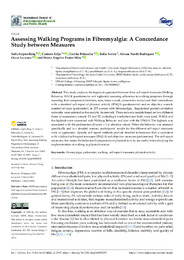Por favor, use este identificador para citar o enlazar este ítem:
https://hdl.handle.net/11000/33516Registro completo de metadatos
| Campo DC | Valor | Lengua/Idioma |
|---|---|---|
| dc.contributor.author | López Roig, Sofía | - |
| dc.contributor.author | ECIJA-GALLARDO, Carmen | - |
| dc.contributor.author | Peñacoba, Cecilia | - |
| dc.contributor.author | Ivorra, Sofía | - |
| dc.contributor.author | Nardi-Rodríguez, Ainara | - |
| dc.contributor.author | Lecuona, Oscar | - |
| dc.contributor.author | Pastor-Mira, María Ángeles | - |
| dc.contributor.other | Departamentos de la UMH::Ciencias del Comportamiento y salud | es_ES |
| dc.date.accessioned | 2024-10-16T08:58:11Z | - |
| dc.date.available | 2024-10-16T08:58:11Z | - |
| dc.date.created | 2022-03-04 | - |
| dc.identifier.citation | International Journal of Environmental Research Public Health 2022, 19(5), 2995 | es_ES |
| dc.identifier.issn | 1660-4601 | - |
| dc.identifier.issn | 1661-7827 | - |
| dc.identifier.uri | https://hdl.handle.net/11000/33516 | - |
| dc.description.abstract | This study analyzes the degree of agreement between three self-report measures (Walking Behavior, WALK questionnaire and logbooks) assessing adherence to walking programs through reporting their components (minutes, rests, times a week, consecutive weeks) and their concordance with a standard self-report of physical activity (IPAQ-S questionnaire) and an objective, namely number of steps (pedometer), in 275 women with fibromyalgia. Regularized partial correlation networks were selected as the analytic framework. Three network models based on two different times of assessment, namely T1 and T2, including 6 weeks between both, were used. WALK and the logbook were connected with Walking Behavior and also with the IPAQ-S. The logbook was associated with the pedometers (Z-score > 1 in absolute value). When the behavior was assessed specifically and in a detailed manner, participants’ results for the different self-report measures were in agreement. Specific self-report methods provide detailed information that is consistent with validated self-report measures (IPAQ-S) and objective measures (pedometers). The self-report measures that assess the behavioral components of physical activity are useful when studying the implementation of walking as physical exercise. | es_ES |
| dc.format | application/pdf | es_ES |
| dc.format.extent | 17 | es_ES |
| dc.language.iso | eng | es_ES |
| dc.publisher | MDPI | es_ES |
| dc.rights | info:eu-repo/semantics/openAccess | es_ES |
| dc.rights | Attribution-NonCommercial-NoDerivatives 4.0 Internacional | * |
| dc.rights.uri | http://creativecommons.org/licenses/by-nc-nd/4.0/ | * |
| dc.subject | fibromyalgia | es_ES |
| dc.subject | pedometer | es_ES |
| dc.subject | walking | es_ES |
| dc.subject | self-report measures | es_ES |
| dc.subject | physical activity | es_ES |
| dc.subject.other | CDU::1 - Filosofía y psicología::159.9 - Psicología | es_ES |
| dc.title | Assessing Walking Programs in Fibromyalgia: A Concordance Study between Measures | es_ES |
| dc.type | info:eu-repo/semantics/article | es_ES |
| dc.relation.publisherversion | https://doi.org/10.3390/ijerph19052995 | es_ES |

Ver/Abrir:
2022 Lopez-Roig et al Assessing walkin programs ijerph-19-02995.pdf
938,3 kB
Adobe PDF
Compartir:
 La licencia se describe como: Atribución-NonComercial-NoDerivada 4.0 Internacional.
La licencia se describe como: Atribución-NonComercial-NoDerivada 4.0 Internacional.
.png)